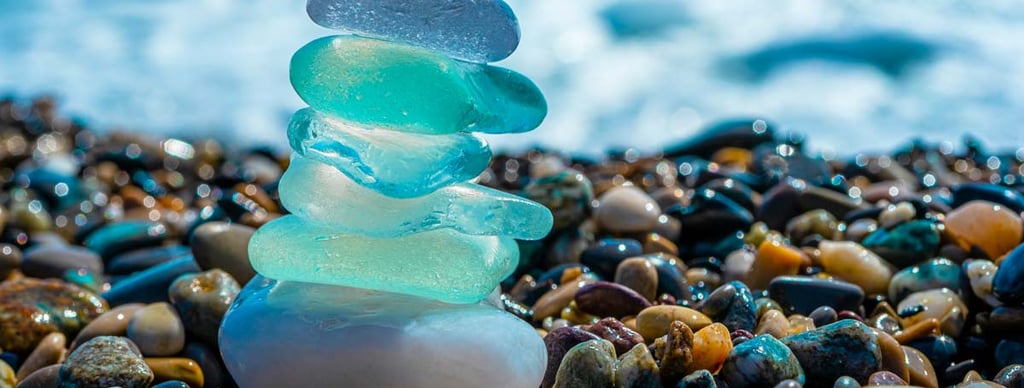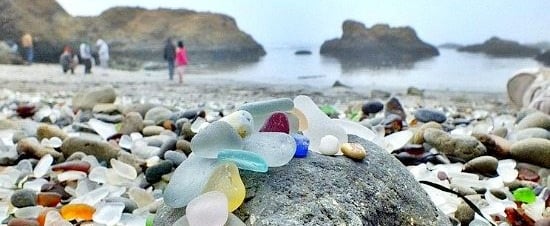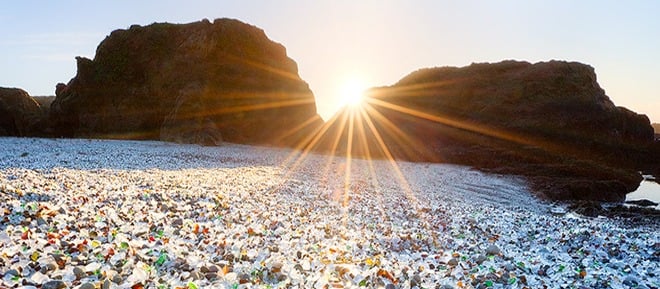Ussuri Bay: Where Glass, Ice, and Tide Shape the Far East’s Hidden Jewel
Waves that smooth broken glass, tides that mirror forgotten histories, and horizons that stretch from Russia to the edge of Asia — welcome to Ussuri Bay, the shimmering edge of the Pacific.


A Bay Shaped by Contrasts
Ussuri Bay (Уссурийский залив), a graceful inlet of the Sea of Japan, lies along the rugged coastline of Primorsky Krai, in the Russian Far East. It stretches like a silver tongue north of Vladivostok, hemmed in by windswept headlands, pebble-strewn beaches, and forests that march to the sea.
It is a bay of paradoxes — at once wild and tamed, serene and stormy, shaped both by natural forces and the traces of human industry. Part of the larger Peter the Great Gulf, Ussuri Bay is not only a place of arresting beauty, but also of unexpected cultural and ecological significance.
Here, the waters do not merely reflect the sky. They reflect centuries of shifting borders, naval ambition, Soviet legacies, and the resilience of nature — most poignantly seen in the glistening glass stones that now define its most famous beach.
The Sea of Shards: Russia’s Accidental Wonder
In recent years, Ussuri Bay has drawn global attention for a natural wonder born of unnatural origins — the Glass Beach. What was once a dumping ground for Soviet-era glass bottles and porcelain has, through decades of tide and time, become a spectacle of luminous beauty.
Tens of thousands of broken shards, weathered by waves, salt, and stone, have transformed into smooth, jewel-toned pebbles that glitter in the sunlight. Shades of emerald, aqua, cobalt, amber, and frosted white mingle with volcanic sands to create a surreal landscape — as if the bay had spilled a treasure chest onto its shores.
Known locally as Steklyannyy Plyazh (Стеклянный пляж), the beach once considered dangerous and ugly is now protected, with restrictions on removing the glass. It is an ecological success story — a reminder of the ocean’s alchemical patience, turning trash into treasure.
In winter, when the sea begins to freeze and snow dusts the colored stones, the beach becomes an otherworldly scene — part post-apocalyptic art installation, part arctic fairy tale.
A Bay of Seasons
Ussuri Bay is deeply marked by the seasons. In summer, its beaches fill with swimmers, picnickers, and kayakers. Small resorts and guesthouses hum with local vacationers from Vladivostok, who come to escape city life and feel the salt wind on their faces.
In autumn, the sea turns steel-blue under sweeping skies, and the coastal forests flame gold and crimson, offering perhaps the most breathtaking time to explore the headlands and quiet coves.
By winter, the bay transforms into a stark but mesmerizing place. Ice floes drift toward the horizon, and snow-covered cliffs frame a silent shoreline. It is during this time that the region’s wild heart feels closest — cold, but alive with the rhythms of the Pacific.
In spring, migratory birds return, and nature’s palette shifts from grey to green. The glass stones begin to reappear beneath melting ice, and fishermen once again dot the coast.
Practical Information
Location
Ussuri Bay lies to the northeast of Vladivostok, in Primorsky Krai, Russia’s Far East. It is part of the larger Peter the Great Gulf, which opens into the Sea of Japan.
How to Get There
By Car: The most common way is via Vladivostok. Ussuri Bay’s beaches, including Glass Beach, are located about 30–40 km from the city center.
By Public Transport: Local buses and marshrutkas run from Vladivostok to nearby villages such as Shamora (Lazurnaya Bay), Sanatornaya, and Slavyanka.
By Tour: Guided day trips from Vladivostok are available, especially in the summer season. Many include stops at Glass Beach and surrounding viewpoints.
When to Visit
Summer (June–August): Best for swimming, beachcombing, and warm weather. Expect some crowds.
Autumn (September–October): Ideal for hiking, solitude, and coastal photography.
Winter (December–February): Glass Beach under ice and snow is magical, but cold. Dress warmly.
Spring (March–May): Tranquil, though weather is variable. Great for quiet walks and early wildflowers.
What to Do
Walk the Glass Beach and photograph the multi-colored stones.
Explore coastal trails along nearby cliffs and pine forests.
Visit in winter to see sea ice, frost-covered glass, and frozen surf.
Enjoy local seafood at small eateries along the coast.
Visit nearby resorts and sanatoria for wellness treatments and seaside views.
Tips
Don’t take the glass pebbles — removal is prohibited to preserve the ecosystem.
Wear sturdy shoes if walking beyond the beach, especially in winter.
There are few facilities at the more remote beaches; bring your own water and supplies.
If you swim, note that currents can be strong, and the water is cool even in summer.


Ecology and the Edge of Asia
Ussuri Bay is a node in a greater web of maritime biodiversity. Its waters support schools of herring, pollock, flounder, and more. Along its shores, you may spot seals, crabs, or even the occasional sea eagle soaring overhead.
Inland, the nearby Ussuri taiga is one of the richest temperate ecosystems on Earth, home to rare and endangered species such as the Amur tiger, Himalayan bear, and Blakiston’s fish owl. Though these creatures do not typically venture to the shoreline, the energy of the wild forest seems to hum just beyond the last dune.
Environmentalists have worked in recent decades to better protect the coastal ecosystems of Ussuri Bay, which remain threatened by overdevelopment, pollution, and overfishing. But the bay endures — not untouched, but still brimming with life, and, in many places, remarkably serene.
Echoes of History
The name "Ussuri" is borrowed from the nearby Ussuri River, which forms part of the border between Russia and China. This region has long been a contested frontier, where Mongol horsemen, Manchu traders, Qing officials, and Russian explorers once moved in complex rhythms.
In the 19th century, as the Russian Empire expanded into the Far East, Ussuri Bay became part of a broader imperial project. Vladivostok, founded in 1860, grew into a strategic port and naval outpost. The bay became a place of shipbuilding, logistics, and, later, Cold War defense.
Even today, remnants of Soviet naval installations, weathered watchtowers, and rusted submarine berths can be found along the bay’s southern edges. These ruins lend the coastline a melancholic gravity — a sense that here, nature and history are still in dialogue.
The Human Coastline
Ussuri Bay is more than a geographic feature — it is part of daily life for those who live along its shores. Small fishing communities rely on the sea’s gifts, though fewer now than in years past. In summer, banya steam rises near the sand, and families gather for beachside barbecues.
Artists, too, are drawn to the bay. Painters, photographers, and poets find in its fogs and sunsets an aesthetic rawness. For them, it is not only a scenic spot, but a canvas that reflects the contradictions of Russia’s Far East — its industrial past, its ecological rebirth, and its mystic edge-of-the-world beauty.




